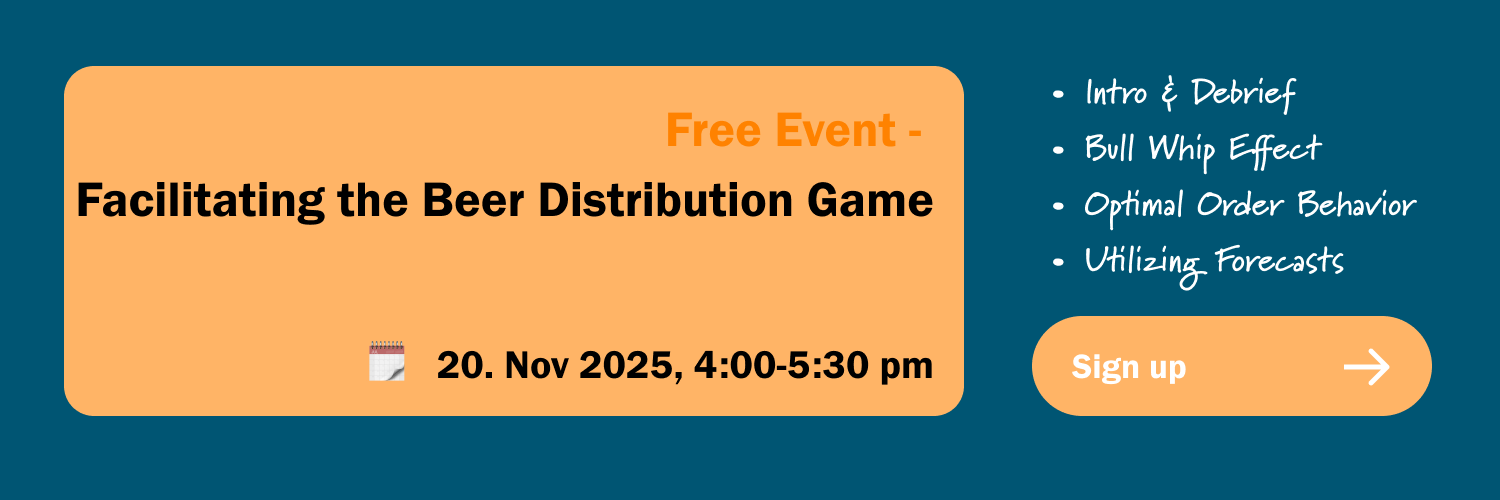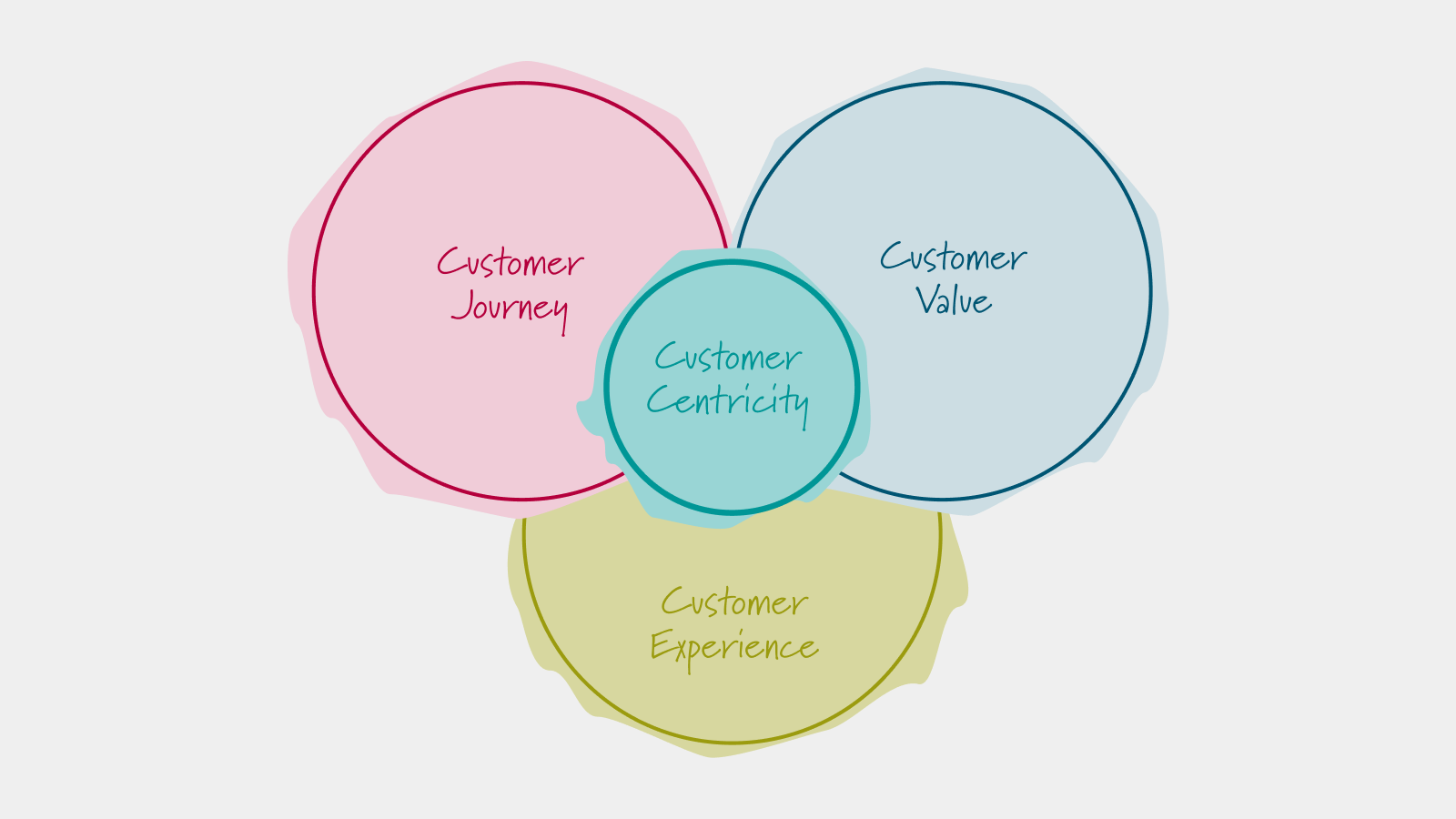
Play Our New Beer Distribution Game
A brief tour of our new version that supports multiple players

Oliver Grasl
16.12.2021
Become part of a supply chain that delivers beer from a brewery via a distributor, a wholesaler, and a retailer to the end consumer. Your challenge is to ensure that the consumers' demand for beer is satisfied by managing your part of the supply chain. Play either in single player mode or – much more fun – in multiplayer mode with your friends.
What The Beer Distribution Game is All About
The Beer Distribution Game was developed at MIT in the 1950s to illustrate how difficult it is to manage dynamic systems such as supply chains – in this case, the system you have to manage is a supply chain that delivers beer from a brewery all the way to the end consumers.
The Beer Distribution Game is more than just a supply chain simulation – it is also about the difficulty of managing complex systems in stressful situations and making decisions in unclear situations.

The game became well known in the 1990s after Peter Senge's wonderful description of it in his worldwide best-selling book "The Fifth Discipline".
The Beer Distribution Game is traditionally played with four players (the brewery, the distributor, the wholesaler, and the retailer) either as a board game or using computers.

At transentis we have been using the Beer Distribution Game now for many years to illustrate key Systems Thinking concepts such as feedback loops and the effect of delays.
In 2014 we developed our own online version of the Beer Distribution Game along with an in-depth analysis of how to improve your playing strategy.
Single Player And Multiplayer Mode
Recently, we published a brand-new version of the Beer Distribution Game on beergame.transentis.com, built entirely using our open source simulation framework, Business Prototyping Toolkit.
You can play the Beer Distribution Game alone in single player mode, or much more fun - with friends or colleagues in a multiplayer mode or with a large group in a multigame mode.
In single player mode, you are the retailer in the supply chain, and the other roles are played by the machine, in multiplayer mode, you play in a team of up to three people, where each player takes on a different role in the supply chain and in the multigame mode you can facilitate many single player or multiplayer games in parallel and, thus, play with a large group of at least 4 people.
Game Instructions
Before we jump into the game, let us take a look at the instructions:

The rules of the game are quite simple. First, you check how many units of beer have been delivered from your supplier. Then you check the orders of your customer. You deliver the beer as much as you can to cover the orders and then you make a decision about how much beer to order for the next week.
The game is played in 24 rounds, each round is equivalent to one week of calendar time.
The key objectives of the games are also easy to understand. You want to keep the inventory steady, keep your costs down, and make sure you don't go beyond the cost target by the end of the game.
You also need to make sure that your behavior doesn't disrupt the supply chain, that is you want to keep the overall supply chain costs down. There is also a goal for the total supply chain costs, which should not go beyond $29000.
There are a few typical pitfalls you need to be aware of:
First of all, like in any real supply chain, there are delays in the system, and your demand for beer from your supplier may not be fulfilled immediately, so sometimes you have to be patient. Why does this happen? Depending on your position in the supply chain, your order for beer may have to be passed up the supply chain right to the brewery. The brewery then produces beer and delivers it through the distributor, the wholesaler all the way to the retailer and end consumer.
You also have to be careful not to over-order: if you show excessive order behavior, then you send shocks up the supply chain and make life difficult for your suppliers. So try to keep your ordering behavior at a moderate level.
If you over-order and your inventory rises too fast, then you have to store the units of beer that you have ordered, and that costs money. So make sure that your inventory does not grow too much.
There are also costs that are incurred if you can't satisfy your customers' demands. Let's face it, if you don't deliver beer and don't meet your customers' demands, then the customer will be unhappy, and you are likely to use lose them. And that's why there's a penalty for this.
And that is it: you see, the introductions are actually quite simple, and they are all summarized on the instruction page.
Playing The Game
The Dashboard
Now let us get playing!
Let us take a look at the single player mode first. When you start a single player game, you immediately enter the dashboard, which is used throughout the game both in single and multiplayer versions.

The dashboard shows which role you have within the supply chain. In the single player mode, you always play the retailer. The dashboard gives you an overview of how many units of beer your customers ordered last week and of how many units of beer were delivered to you. It also shows your inventory, that is how many units of beer you have in stock, and your back-order, that is how much beer you still need to deliver to your customer as soon as it becomes available.
The dashboard also shows your current cost level and how much beer you have delivered to your customer during the last week.
Recall the key objectives of the game: you want to keep your back-order close to zero, your inventory should stay close to four hundred. Your total cost must remain below $8300.
The game starts in a steady-state: last week the customer ordered 100 units of beer, 100 units of beer have come in, and you delivered 100 units of beer. So overall there is no change to your inventory, which is set to 400 initially.
Now let us make an order decision. We do not know exactly how many units of beer our customer will order next week - but based on your experience until now, let us assume they will order a hundred units - then we should do the same.
We order a hundred units and wait to see what happens.

We can see the timeline progress by one week, and we are now at the beginning of week two. The dashboard shows what happened last week and that nothing much has changed: our customers again ordered 100 units of beer, 100 units of beer came in, and we delivered 100 units. Back-order and inventory remain stable, so our costs did not go up.
Okay, so let us order 100 units again.

Now, something is happening. In the last week, customers ordered 400 units of beer, and we also delivered 400 units of beer. Our supplier delivered 100 units, so our inventory is now at 100.
This time, the decision about how much to order has become much more difficult because our customer order behavior has changed.
I want to avoid spoiling the game, so I will leave you to figure out how much to order!
The Performance Appraisal
Both during the game and at the end your performance will be appraised. Let us see what this looks like by just “clicking-through” the game without changing our order behavior.
The dashboard indicates when one of your key performance indicators goes off target. Here my back-order is much too high:

You can check what happened in the past at any time by clicking on the order history button.

After 24 rounds, you reach the end of the game, and you get a performance appraisal: did you meet the cost targets? In this case, of course, we did not, but I’m sure you will perform much better!

The performance appraisal is not just for you, you can also take a look at how the other players in the supply chain performed by selecting the appropriate dashboard.
Rejoining The Game
Let me show you one more important feature: If you jump out of the dashboard during the game and then start playing again, you will be asked if you would like to rejoin the game you left.

That is a useful feature, especially when you are playing the multiplayer version: we will never disconnect you on purpose, but your internet connection might fail, in which case you can rejoin your running game.
The Multiplayer Game
Now let us take a brief look at the multiplayer game. When you start a multiplayer game, you are initially presented with the lobby. If you start the game, you become the game’s administrator and the lobby is where you can set your player's name, invite others to play, and assign their roles within the supply chain.

First, let me enter a name. I click ok, and now you can see I am playing the brewery and my name has been assigned to it.

If you would like to change your role in the supply chain, then you - as the game administrator – can assign new roles to each player.
Say I would like to play the wholesaler - then I assign the wholesaler role to my name (and the brewery to the former wholesaler).

As soon as I hit the apply button, my position in the supply chain is switched - my new role is also indicated by a changed background image.

At the bottom of the screen is a button that you can use to copy an invitation link. You need to send that link to the other players via email or chat, so they can join the game.
When they open the link, they will automatically join the lobby and will be assigned a role, which you as the administrator can then change. This is especially useful if you play the game more than once and would like to switch roles.
Once everyone has been assigned to the slots, you can then start the game. Each player is then presented with a dashboard identical to the single-player dashboard.
Note that in the multiplayer game, there should be no communication about the current state of the game or about order strategies between the players - all communication is done via the orders you place.
Summary
Okay, that was my brief overview of how to play the Beer Distribution Game. I hope you enjoy playing!
If you have any questions during the game, please get in touch via the chatbox.
You can read an analysis of typical game behavior and learn strategies of how to improve your playing strategy in our post Understanding The Beer Distribution Game.
We also have a look at Open Source GitHub Repository that contains Jupyter Notebooks and simulations that you can use to make your own experiments.
Workshops
Resources
All Rights Reserved.


